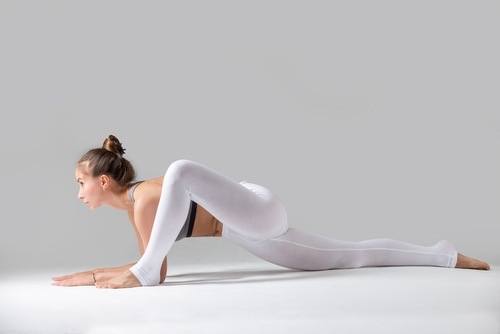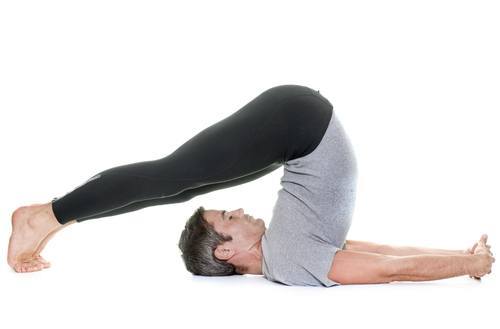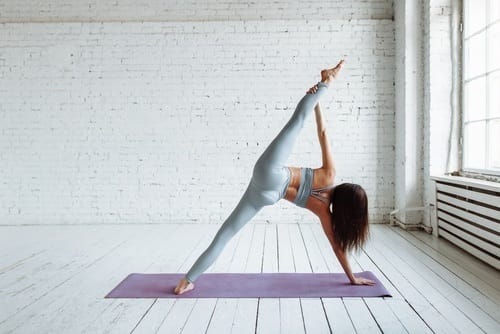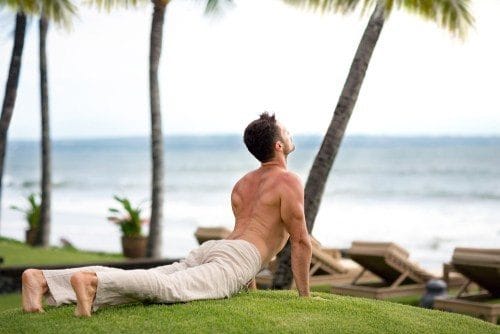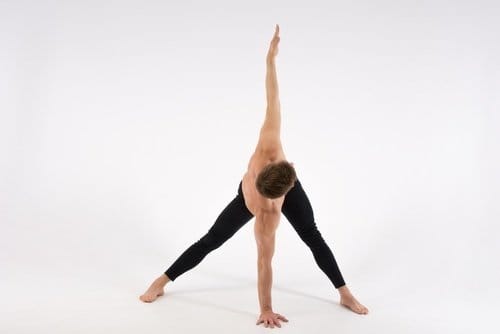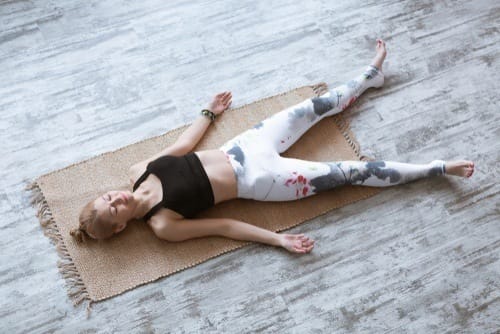Benefits of Yoga for Martial Arts
Martial arts and yoga actually have quite a bit in common. The discipline, practice, and purpose of martial arts and yoga, from the outside, look like polar opposites, with yoga appearing to be light and fluffy ‘love,’ while martial arts often carries a ‘kill you now or later,’ in-your-face warrior combat mentality. Yoga for martial arts serves as a transformative bridge, harnessing the synergy between these two disciplines to enhance strength, flexibility, and mental clarity.
May you float like a beautiful Yogi and sting like a killer martial artist!
These two typically register as opposite ends of the exercise spectrum in terms of levels of difficulty, physical prowess, intensity, focused intention, and commitment, But nothing could be further from the truth, for either stereotype. The modern Western yoga world tends to value harmony, nonviolence, peace, and balance above all else.
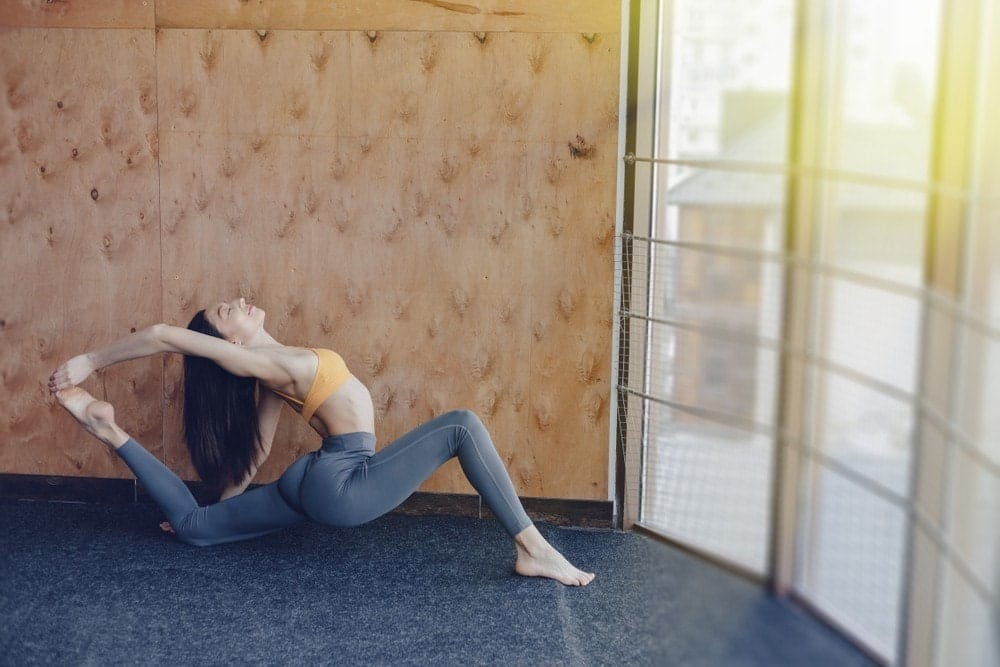
The very concept of practicing both yoga and martial arts simultaneously makes many yoga practitioners shake their heads in bewilderment, disapproval, astonishment, even shock.
Or tell martial artists that yoga helps loosen tight neck and leg muscles after hours of punching bags, sparring, and kicking practice, quickens recovery time after injury, then watch the eyes roll and hear the snickers.
Both sides tend to exhibit intense emotional reactions and toss out confrontational comments.
Yoga and Martial Arts Shared Heritage
Many do not realize that these seemingly disparate practices both spring from the same historic roots shrouded in antiquity; have similar focus upon breath and Qi; emphasize balance, calm, and integration of inner and outer aspects of self; are powerful physical practices; teach intense spiritual growth; and practicing both together strengthens and supports every aspect of the human body, mind, and spirit.
Practicing yoga in conjunction with martial arts training is perfect for any athlete whose body feels tight, shoulders and neck knotted, knees and other joints aching, back or elbows sore, has injuries, mind stressed, worried or anxious.
This ancient Indian exercise system was designed to heal the body, integrating body and mind, regenerate cells, retain youthful flexibility, maintain healthy organs and physical vigor, along with relieving mental and emotional strain. Many studies have proven the efficiency of yoga for strengthening joints and improving the suppleness of the body.
WebMD reported, "In one study, people improved their flexibility by up to 35 percent after only 8 weeks of yoga.” So these benefits are experienced very quickly, making it the perfect extra interim exercise for younger fighters needing extremely strong flexibility for submissions, who’ve had injuries new or chronic, So these benefits are experienced very quickly, making it the perfect extra interim exercise for younger fighters needing extremely strong flexibility for submissions, who’ve had injuries new or chronic, and older martial artists feeling the effects of years of abuse on the mat, who want to regain a more youthful suppleness, ease of movement, and lightness of step.
Yoga and Martial Arts are Connected to Yin/Yang Practices
Martial arts and yoga are each complementary practices that fill in where the other let off, a synergy with interconnecting techniques, breath practice, movements, and intention that intermesh with a Yin/Yang precision. They are two equal but different aspects, a night to day, soft to hard connecting flow, not at all opposite one another.
The combination of the two practices is like tempering the sword, heating the steel until soft, then repeatedly pounding and folding, until that soft, yielding metal becomes the sword refined to an extreme edge. This synergy, often referred to as yoga for martial arts, helps practitioners unite the calm focus of yoga with the disciplined intensity of martial arts, creating balance and strength within the physical and emotional aspects.
Yoga Protects and Aids Recovery for the Martial Artist

Practicing yoga supports the martial artist by increasing flexible strength, increasing blood flow through the body, and giving the body a better ‘bounce back’ type of resilience and flexibility, thereby increasing resistance to injury. When injury does happen, yoga practice has been shown to dramatically shorten recovery time, speeding up time spent off the mats. Martial arts and yoga teach thoughtful and conscious use of power and strength, mental and physical fortitude, awareness of one’s own and others’ energies.
They can channel aggression into assertiveness, anger into beautiful forms, fear, uncertainty, and insecurity into lightning strike moves. As Jet Li said, “When you learn something, always use the heart.”
Yoga Shortens Martial Arts Injury Recovery Time
Recently more studies are being undertaken to document and prove in exactly what manner practicing yoga aids and quickens all types of injuries and imbalances, including long bone fractures and breaks. The inarguable efficiency of yoga practice to support the martial artist, first of all, in avoiding and minimizing the chance of injury, and then to hasten overall healing and recovery, has been proven repeatedly to such an extent that researchers now clamor for more studies utilizing greater detailing and width of approach.
Yoga and Martial Arts Have Been Around for Centuries
Learn How to Become More Powerful Integrating It Into Your Regimen From Our Free Newsletter
On the first day and again after 21 days (the generally accepted minimum time to complete the wound healing process), the two groups were compared based on the assessment of pain, tenderness at the fracture site, swelling, and bone density. In all cases, the group practicing the yogic breathing techniques showed dramatic improvement over the group that did not.”
Yoga Helps Martial Artists Release Emotional Tension Before it Leads to Injury
"The philosophy of aikido is about harmony and reconciliation of opposing forces. It becomes a perfect metaphor for socializing children and adults for that matter," Saposnek said.
Aikido is a Japanese martial art that has been compared and related to the Feldenkrais method, which is an integrative therapy creating and combing self-knowledge with physical movement.
Also, the basic Samurai code of Bushido has relevance and is connected to teachings in psychotherapy. [5] Often when martial arts training gets intense, emotions flare, show unsuspected depths of feeling, resulting in tension.
Yoga helps release these emotional flares and tensions through deep, slow movements that aid in relieving, releasing and integrating emotional hot spots.
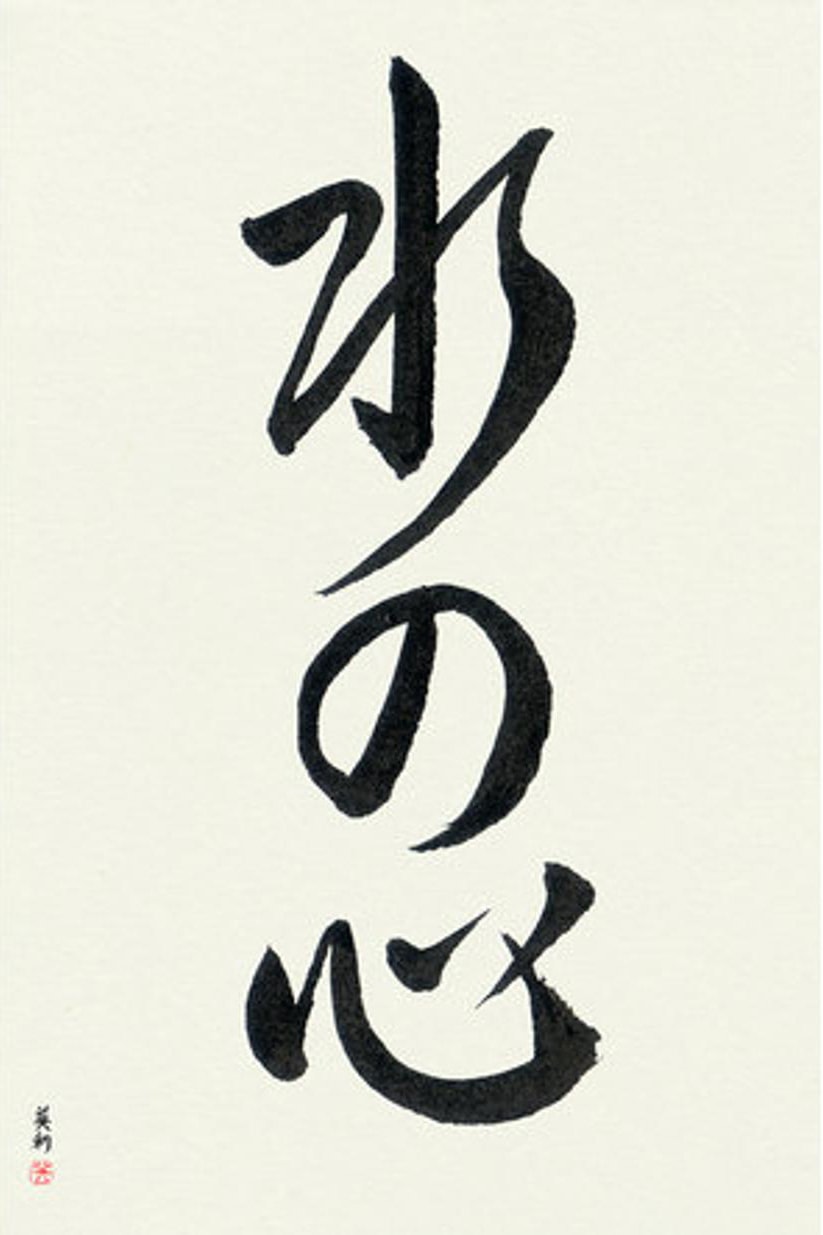
Source: Takase Studios
Yoga Relieves Martial Artists’ Chronically Tight Muscles and Joints
Martial artists often repeat the same movements day in, day out, year after year, resulting in overuse injuries, chronically tight muscles, tight, sore or inflamed joints, and stiffness of posture or in certain areas like rhomboids. Yoga hones in on these overused muscles, joints, and tendons. It supports the martial artist by restoring and rebuilding connective tissues.
Yoga Gives Faster Recovery Benefits and More For Martial Artists
Yoga exercises and poses give many benefits besides quicker recovery for the martial artist. They will strengthen techniques and contribute striking precision, explosive power, extreme flexibility, blinking speed, extreme balance, and a sense of ease to techniques that are used constantly in martial arts.

Yoga also strengthens focus, concentration, and determination. Researchers found that mental strength is of ultimate importance for martial artists, and believe karate experts’ stronger punching force results from mind control.
Movement always starts in the brain, so powerful mind control and brain direction result in more powerful strikes. It’s not simply from increased muscular strength. [7]
Jackie Chan Said It Best
In an interview comparing martial arts and yoga. “In kung fu, the explosiveness of action is necessary to do the most damage in the shortest time. But the moves in yoga are slow, focusing on the softness and flexibility of the body. In their own way, yoga moves are also at full strength: stable and balanced.
When a martial arts practitioner learns yoga, the training of the mind combines with their physical strength to empower his or her willpower. Kung fu and yoga, therefore, complement each other. Both kung fu and yoga teach one how to concentrate, and to keep one’s body and mind in balance. "They both train one to develop a clear mind and to feel one’s inner joy, protecting one’s mind from outer influences.” ~Jackie Chan
Yoga for Martial Arts Injury Recovery
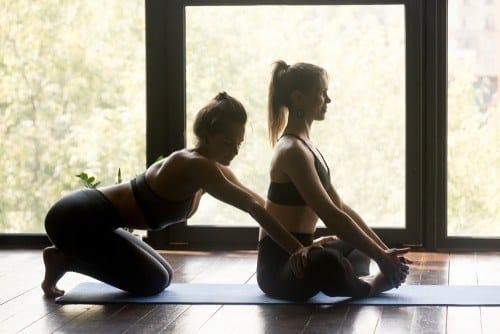
Practicing yoga shortens recovery time after injury, prevents many injuries from occurring by relieving chronic tension, tightness, loosening knots in muscles and connective tissue. Yoga can be used to help heal hand and finger injuries, which are always a problem and issue in martial arts, since finger strikes, punches, blocks, chops, etc., all require extensive use of hands and fingers.
Martial artists and other athletes benefit from using yoga techniques to help fingers and hands recovery from new and chronic injuries. Also, a regular yoga practice will dramatically increase hand and finger strength, further protecting them from strains, breaks, and other types of injury.
Endurance Athletes Use Yoga for Post Workout Recovery
Martial arts are all about endurance—lose your endurance and you lose the fight—period. That’s great, until all that intensive training results in muscular imbalances, chronically tight, sore, or injured areas, overuse injuries and dull aches you think you’ve got to just get used to having.
Yoga releases all that accumulated stress, tension, and pain, assists in recovering from monster high-intensity training sessions, by applying corrective modalities to the body in a deep, slow, healing manner. Yoga increases fluidity, strength, agility, flexibility, endurance, and balance. It also sharpens mental acuity, which is essential when trying to escape that killer hold.
Yoga will Improve Your Martial Arts While Reducing Injuries
There are few situations for martial artists to use high kicks since they're not very efficient at stopping an opponent, despite the occasional successful MMA or UFC KO. High kicks and low kicks are still an integral part of the martial arts, and require massively powerful muscles throughout the long muscles of the body, including thighs, back, abdomen, and buttocks, in order to do them correctly without injury.
Yoga moves that will develop strength and openness in the flexible hip area, and develop the strong lower body muscles required for primo martial arts moves include the Pigeon Pose, along with standing poses, which develop leg strength and open up hips.
One excellent pose to strengthen and tone the knees, which are massively injury prone, is to practice the Hero pose.
Shoulders are another area prone to damage from shoulder rolls, crash landings, and thousands of hours spent performing strikes. Many yoga moves like Standing Tree, or Plow pose can help strengthen and loosen tight shoulders and upper back area.
Jessica Aguilar uses yoga in her workouts. “I love it," says World Series of Fighting Champion Jessica 'JAG' Aguilar, "Practicing Yoga has helped a lot. I feel better and I'm more focused in the moment."
We Can Help You Recover Faster to Build Strength and Flexibility
Subscribe to Our Free Newsletter!
Martial Arts Yoga Poses to try for Recovery and Increasing Martial Arts Power
There’s an incredibly wide variety of yoga stretches and exercises that can be used to improve martial arts strength, balance, suppleness and flexibility (helps avoid headlocks in grappling), power, and core (gives killer submission strength).
Yoga also acts as restorative and helps minimize damage inflicted by constant training. Duncan Wong is a martial artist whose grandmasters were acupuncturists who wisely taught him that healing and killing points are the same.
This gave him inspired insight into teaching, healing, and life arts. He has developed his own fusion of teachings called Yogic Arts, which is his patented integration of yoga, martial arts, and Thai massage. He has taught performers such as Sting and Madonna.
He suggests some moves that support fighters. “I’m known within yogic, martial and healing circles as a highly achieved athlete and healing-warrior practitioner.” Here are a few yoga poses along with how they’ll increase martial arts ability and power.

